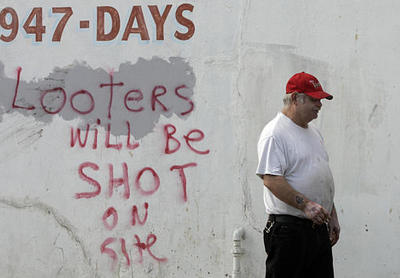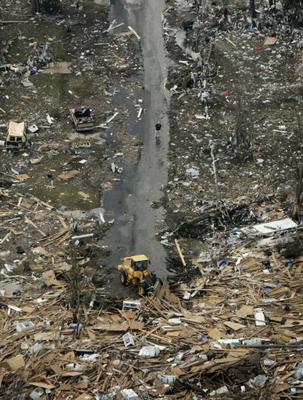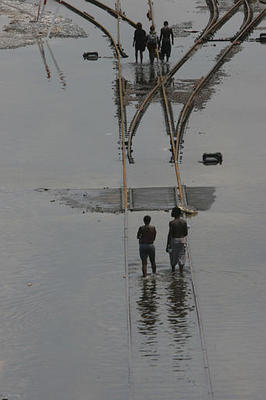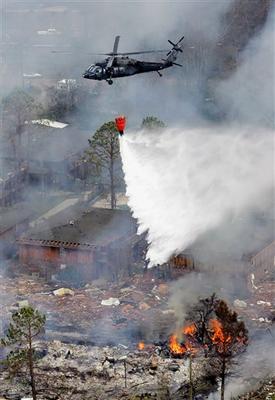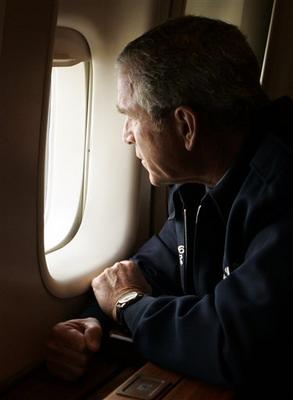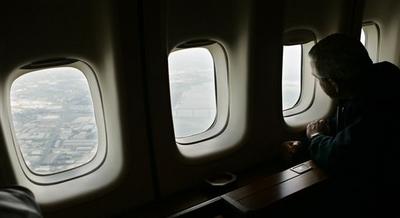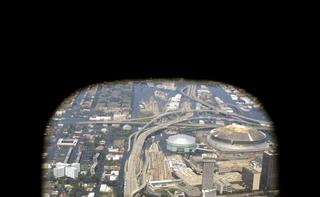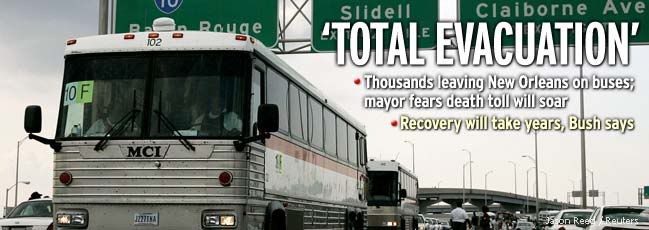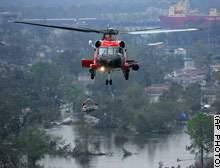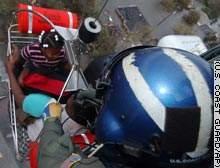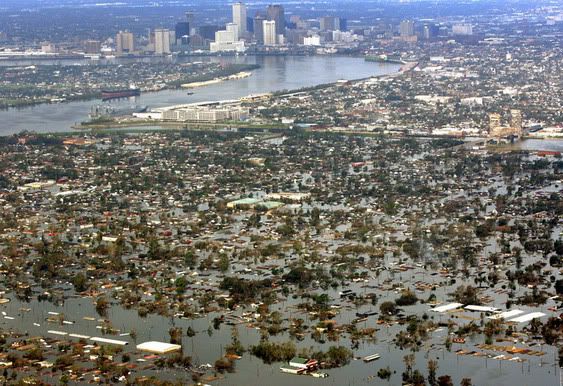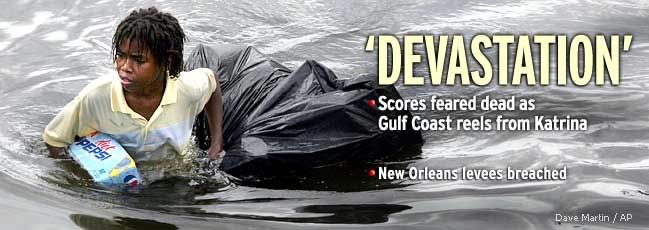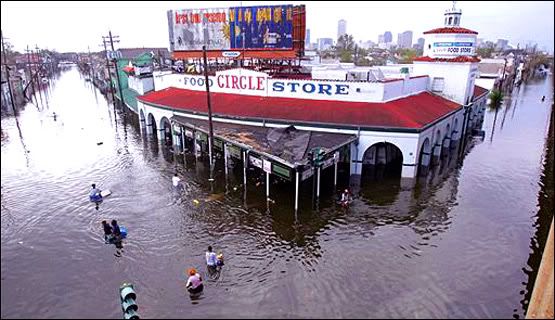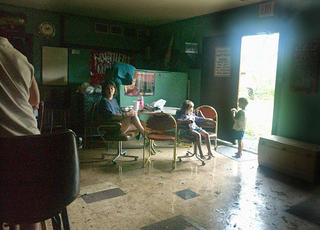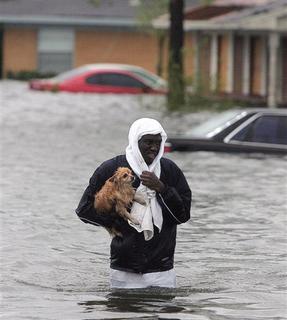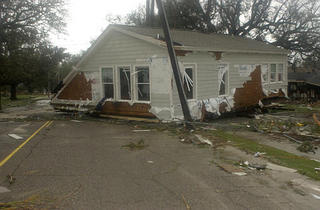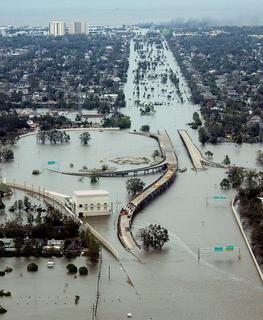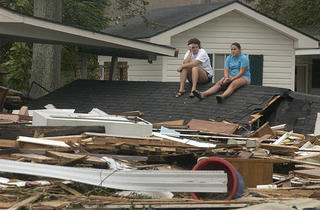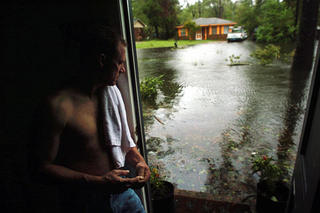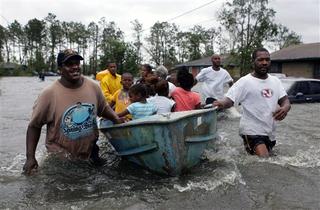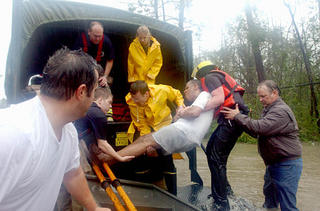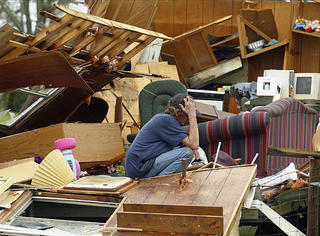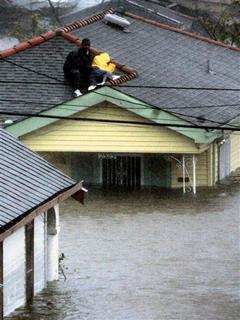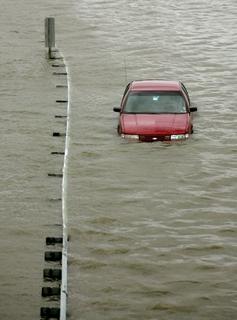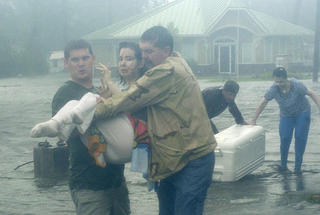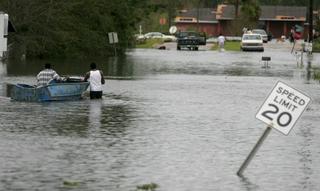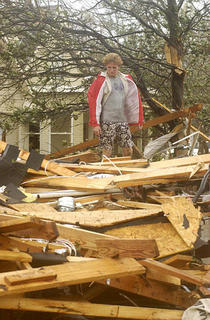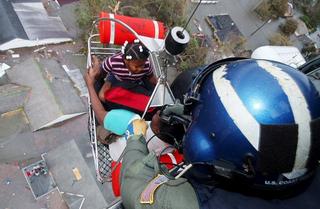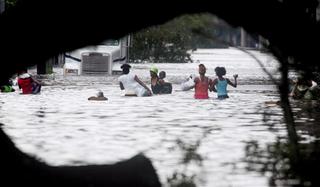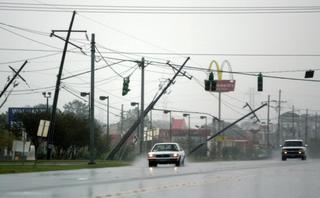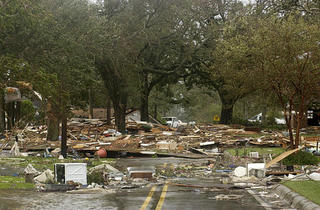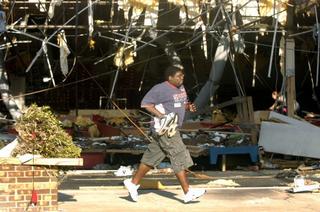KATRINA / Hard New Test for President
The New York Times
WASHINGTON, Aug. 31 - Not since he sat in a Florida classroom as the World Trade Center burned a thousand miles away has President Bush faced a test quite like the one he returned to Washington to confront this afternoon.
After initially stumbling through that disorienting day almost exactly four years ago, Mr. Bush entered what many of his aides believe were the finest hours of his presidency. But unlike 2001, when Mr. Bush was freshly elected and there was little question that the response would include a military strike, Mr. Bush confronts this disaster with his political capital depleted by the war in Iraq.
Even before Hurricane Katrina, governors were beginning to question whether National Guard units stretched to the breaking point by service in Iraq would be available for domestic emergencies. Those concerns have now been amplified by scenes of looting and disorder. There is also the added question of whether the Department of Homeland Security, designed primarily to fight terrorism, can cope with what Mr. Bush called Wednesday "one of the worst natural disasters in our country's history."
All this has inextricably linked Mr. Bush's foreign agenda, especially Iraq, to the issue of how well he manages the federal response to the monumental problems in Louisiana, Mississippi and Alabama. Mr. Bush knows the risks. He saw up close the political damage done to his father 13 years ago this week, when the senior Mr. Bush was dispatching fighter jets to maintain a no-fly zone over parts of Iraq and promoting his trade agenda while 250,000 Floridians were reeling from the impact of Hurricane Andrew.
But the current president, in contrast, prides himself as a crisis manager. He observed in a debate with Vice President Al Gore in 2000 that natural catastrophes were "a time to test your mettle."
The next few weeks will determine whether he can manage several challenges at once, in the chaos of Iraq and the humanitarian and economic fallout along the Gulf Coast.
Success could help him emerge from a troubled moment in his presidency, when his approval ratings have hit an all-time low. But it is hardly assured.
His first challenge is to show that both his reconfigured government and the National Guard units can perform on both fronts. Mr. Bush, his aides pointed out Wednesday, declared a disaster even before the storm hit, enabling the Federal Emergency Management Agency to deploy early. But while the National Guard was called in quickly, there are already questions about whether the aid would be swifter if deployments to Iraq were not so intense: Mississippi has 3,800 Guard troops in Iraq, and Louisiana has about 3,000.
That leaves more than 60 percent of their Guard still in the state, which Joseph M. Allbaugh, one of Mr. Bush's closest friends and his first head of FEMA, said in an interview Wednesday should be plenty for the challenge ahead.
"If anyone is telling you that Iraq is getting in the way, well that's hogwash," Mr. Allbaugh said from Baton Rouge, where he was clinging to a bad cellphone connection while trying to help muster private industry to aid in the disaster relief.
The longer-term risk is that the storm's aftermath will push gasoline prices to a breaking point - something Mr. Bush alluded to Wednesday when he warned that "our citizens must understand this storm has disrupted the capacity to make gasoline and distribute gasoline." Even before returning to Washington, Mr. Bush approved loans from the country's Strategic Oil Reserve. But that is at best a short-term measure, and should prices continue to rise, Mr. Bush will inevitably confront the question of whether his administration was ill prepared to absorb an oil shock at a time of conflict in the Middle East.
Mr. Bush's instinctive response to such moments, his longtime aides and friends say, is to set up measurements to determine whether his efforts are adequately addressing a problem. "He likes being a hands-on manager," said Mr. Allbaugh. "He wants numbers, he wants to be able to show that the ball is moving down the field." That was evident Wednesday in the Rose Garden, when Mr. Bush started ticking off statistics on the number of people rescued, the numbers of meals-ready-to-eat that have been delivered, the number of people already in shelters.
It is reminiscent of how Mr. Bush has argued that progress is being made in Iraq. But as the administration has learned in Iraq, the imagery of violent chaos, repeated over and over, can undercut even the most frequently cited statistics. And so Mr. Bush's biggest risk may be an inability to control circumstances that are beyond his ability to shape from Washington.
"The great thing about this president is that he doesn't try to use tragedy to gain immediate attention for himself," said Bob Martinez, a former governor of Florida who has endured his share of hurricanes and other disasters. "He talks to those with knowledge, and then he acts."
But now, he said, "there needs to be a powerful message to the country to energize the help," a message Mr. Bush plans to amplify, his aides say, when he visits the stricken areas, probably Friday or Saturday. Mr. Martinez noted that "the risk is that there is sometimes a big disconnect between you when you speak and when bottles of water end up in people's hands."
That may be a more complicated problem in this disaster, veterans of such operations warn, than it was after 9/11. Mr. Allbaugh noted that for all the horror of that day, the immediate damage was confined to "16 acres in New York" and part of the Pentagon, and "here you have hundreds of thousands of square miles" of misery. And the problems in the region will vary tremendously, from caring for the newly homeless in New Orleans to wiped-out ports along the coast.


